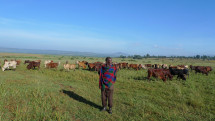The Many Faces of the Investor Rush in Southern Africa Towards a Typology of Commercial Land Deals
Temas
This working paper reviews the latest experiences of land grabbing in Southern Africa, detailing questions of scale and duration, initiation, negotiation processes, production sectors, employment, natural resource use and more.

Autores
My view is that you want government to be as small as possible. In a sense, Africa can start with a clean slate... Listen, I want to control that ground. I don’t want someone saying, ‘Thank you for your investment, now get out’. I want a country that’s weaker. There’s a cost to dealing with strong countries: resource nationalism. People forget that. - Phil Heilberg, US investor with allocation of one million acres in Southern Sudan (cited in Funk 2010, 62)
This paper reviews experiences of recent land deals which have curtailed rural communities’ access to land and water in Southern Africa. As a work in progress, it summarises initial evidence of the characteristics of this new wave of deals on public lands and land held under customary tenure, and maps the distribution of these investments across the region. It draws attention to their diverse manifestations – to questions of scale and duration; initiation and negotiation processes; production sectors; employment; natural resource use; determination, payment and distribution of compensation; investment partnerships and repatriation of profits; and end users. It adopts a schematic analytical framework for distinguishing between different types of land deals in the region and argues that this is important for considering the implications for unfolding future trajectories of agrarian change.
